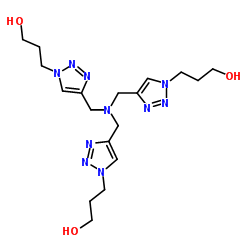| 结构式 | 名称/CAS号 | 全部文献 |
|---|---|---|
 |
三(3-羟丙基三唑甲基)胺
CAS:760952-88-3 |
| 结构式 | 名称/CAS号 | 全部文献 |
|---|---|---|
 |
三(3-羟丙基三唑甲基)胺
CAS:760952-88-3 |